Genre: Platform Developer: Sega Ent. Publisher: Sega Europe Players: 1 Released: 1993
It’s hard to overstate the extravagance of the entertainment business in the ’90s. Today’s blockbusters may gross more than ever before, but in the ’90s it seemed as if every big media franchise entailed not just entertainment products but cultural events. Jurassic Park marked one such cultural event. Spielberg’s classic went on to gross over $900 million in the months following its 1993 release, breaking all manner of opening and all-time records. It also paved the way for truckloads of toys, books, and games. The NES, SNES, and Mega Drive/Genesis all received their own unique tie-in game. The Master System received one too.
What’s immediately apparent from the game’s start screen, is the wish to be faithful to the source material. What’s also apparent, in the now iconic silhouette of the Tyrannosaurus Rex, is that something’s a little bit off… that despite its best efforts, the game never quite nails the aesthetic and atmosphere of the film on which it’s based. And yet, following an almost-replica Tyrannosaurus roar, 8-bit and drawn out and a little too high-pitched, we’re plunged into a game quite happy – confident, even – in delivering its own Jurassic experience, in its own way.
A fantastic melody, at once hopeful and haunting, accompanies a brief story introduction to the world of Jurassic Park. No corporate sabotage here – the park’s woes are solely down to a hurricane. As far as storytelling in the 8-bit era is concerned, it’s a competent attempt. The slides of danger and mystery (and dinosaurs) more than make up for bland scrolling captions. When Dr. Grant stands by his jeep looking up at the gate of Jurassic Park – a fantastic imitation of one of the film’s many memorable scenes – he drives through and our journey begins.
Jurassic Park’s gameplay is split into two distinct segments: driving and platforming. The former always precedes the latter, and although ‘driving’ seems the obvious way to describe it, it is in fact more of a shooting sequence. Grant’s jeep travels along an often decrepit, often scenic road, and it’s not long before he’s being assailed by dinosaurs from all directions. The car drives automatically – the player’s goal is to aim the cursor at dinosaurs, and shoot them into fleeing. It’s surprisingly fluid action, and a great showcase of what 8-bit tech was capable of, the only technical drawback to three or four dinosaurs and power-ups onscreen being occasional slowdown and moderate flickering.
The real problem, if any, lies in both the relative easiness of the gameplay, and in turn the way it meshes with the following platforming sequences. Even first-time players would be hard pressed to have their life meter fully depleted, and while power-ups offer increased hit points and extra lives to carry over to the platforming round, they’re too difficult to miss, taking the edge off both the driving sequence itself and the impact it has on the subsequent round. That’s not to say the driving sequences are unnecessary; they’re a lot of fun and they look and sound great and run well, but a higher difficulty would have made them more rewarding in the long run.
The core of the game lies within the platforming sequences, and it’s here that players will be won over or lost. What’s first apparent, in any one of the game’s five levels, is the fantastic visuals, capable of depicting scenic waterfronts, windy forests and claustrophobic maintenance passages with ease. It’s instantly atmospheric no matter what the setting, easily becoming one of the game’s highest points. The controls are tight, functioning exactly as they should, although the level design doesn’t often require precise navigation which is a shame. The sound effects are adequate, but music fares a little worse, a mix between the overly upbeat and the overly eerie with some genuinely great tunes in-between. Combat works by means of a selection of three weapons: a long range gun that fires horizontally, a variant that fires upwards before sweeping left and right, and a grenade that hits the ground before bursting upwards. It’s the first that’s most valuable, although the others have their uses at select parts of the game.
This is the major design flaw of Jurassic Park – the management of weaponry. While it sounds good on paper and does indeed add another layer of depth to an otherwise basic game, it’s simply not efficient to change weapons as different dinosaurs turn up. A Pterosaur may require a vertical-firing weapon, but when a Velociraptor turns up you have only a second or two to switch before it attacks and you lose health. On an emulator this isn’t so bad, but on the original Master System hardware, where the weapon select screen is set to the pause button on the console itself, it requires sitting within reach of the system and being prepared to hit it at a moment’s notice.
The game’s boss fights make it worthwhile; however, each requiring a terrific blend of strategy in both movement and attack. What makes them particularly enjoyable is that although they can be formulaic, they all, like the best battles from Sonic The Hedgehog, reward risk and speed. You can take it slow, carefully ebbing away the boss’s health, or you can go all-out and defeat them in half the time. It’s the kind of satisfying boss design that still holds up today.
Is Jurassic Park on the Master System prime time 8-bit gaming? Not quite. Is it a truly authentic Jurassic Park experience? Not quite. All the more impressive then, that it still manages to hold up as an enjoyable movie-based tie-in and a well-crafted game in its own right. There may be little here to recommend to the more general retro gamer, but for Jurassic Park and Sega fans alike, it’s a great way to revisit the twilight days of 8-bit platforming, and a time when dinosaurs ruled the Earth.
SCORE: 7 out of 10

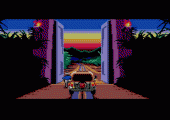
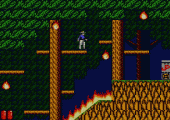
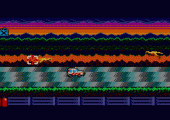
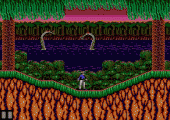
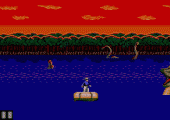
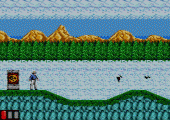
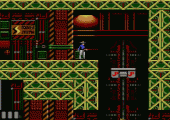
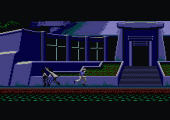

Recent Comments